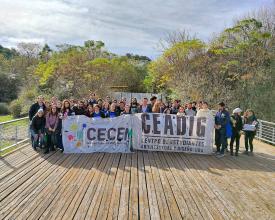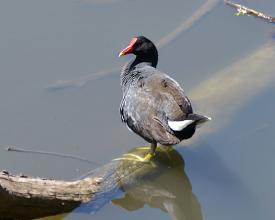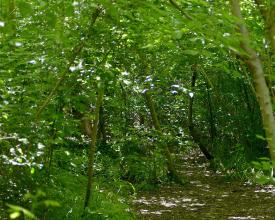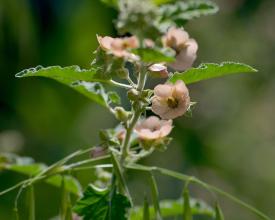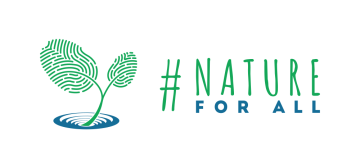
Resilient Cities: Urban Protected Area of the University of Buenos Aires.
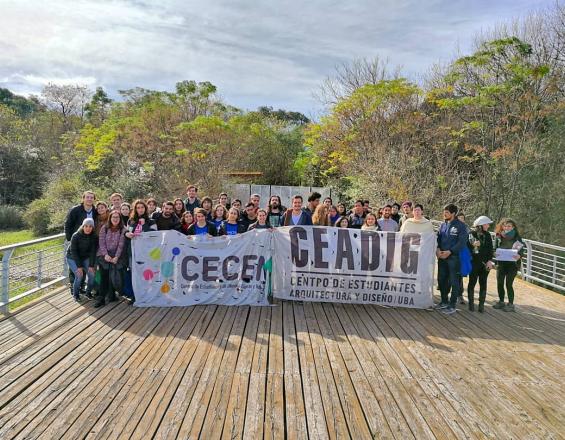
During the 1960s, many landfills were developed in the Rio de la Plata, Argentina. These actions created a new ecosystem of anthropogenic origin.
In 1985, a student movement began to work to protect this site which was known as La Reserva Biológica y Parque para la Difusión de la Ciencia (The Biological Reserve and Park for the Diffusion of Science).
The reserve was the first urban area in Buenos Aires. With the support of the authorities, work began over three decades, and in 2011 the site was designated by law as a protected urban area called Ciudad Universitaria, Reserva Ecológica.
This site plays an essential role in the university and the city of Buenos Aires, providing strategic environmental services for human health. It is an excellent example of how urban parks are essential to the well-being of people living in cities.
Context
Challenges addressed
The biggest challenge is that the management of the Urban Protected Area depends on governmental institutions and is not considered a priority issue on their agenda, where the necessary resources, personnel and political support are not allocated.
Location
Process
Summary of the process
Urban Protected Areas are key elements to conserve the biodiversity of the region, but they also represent a fundamental element to improve the health of the population, acting as lungs that renew polluted air and are increasingly recognized and valued.
The generation of information is an important exercise, the added value is that it is the students of the faculty belonging to the Urban Area who generate the inputs that are shared with the general population.
A population informed of the benefits of these areas is the one that will support the financing mechanisms that will ensure long-term conservation. The university segment contributes directly, but it is the citizens who should be involved in their management and conservation.
Building Blocks
Generation of information
The threat of human action on ecosystems and their fauna and flora has become the main focus of research and information generation.
The Faculty of Biological Sciences works with integrated information management to ensure that the information generated is accurate, reliable and available at any time and to any public.
This information is used for decision making at the territorial level.
Enabling factors
- The School of Biological Sciences of the University of Buenos Aires has an innovative program that involves students in the participation of natural spaces where they promote their abilities and where they have complete interaction with nature.
- The generation of information is a commitment that students assume as it is part of their curricular plan, which allows them to generate continuous and quality information.
Lesson learned
Previously, environmental problems were not linked to information management, which led to gaps in the planning process.
Based on what conservation should be, the Urban Nature Reserve proposal has a management based on academic information by the students who are part of the community.
Ecosystem services for the city
The environmental services provided by nature are important for people's development and quality of life.
Urban nature reserves are the ideal space. Both for the recreation and health of the inhabitants living near them, as well as for the provision of environmental services. The reserve allows the conservation of drinking water, temperature regulation and air purification.
Enabling factors
- Every day, society recognizes Urban Natural Areas for their high sustainable value. The creation of urban natural reserves aims to protect different species of native plants and animals native to a given region, as well as to protect forests and lagoons, among other areas.
Lesson learned
Since their recognition does not yet have national scope, financing is the most difficult thing to obtain to maintain this type of reserve. In general, municipalities are in charge of developing them through local ordinances. But for this to happen, it is necessary to sensitize decision-makers, which is why the university includes communication and awareness-raising activities.
Financing and operation
Achieving financial sustainability is the best alternative to effectively manage the Urban Protected Area. The University has the capacity to secure stable financial resources throughout the year and the community of the Faculty of Sciences actively participates in the search for organizations and partners that can support the conservation of the Area.
Enabling factors
- The Urban Protected Area is part of the University of Buenos Aires, which ensures institutional presence and a monitoring mechanism.
- The participation of the University ensures that the financial gaps for the conservation of the site are covered.
Lesson learned
In spite of the active conservation work, we must continue to raise awareness so that more and more people recognize the value of these areas.
If people do not get involved, we will not be able to influence public policies and this is a step towards creating effective mechanisms to ensure the long-term financing of the site.
Recognizing the value of the Urban Protected Area allows governments to participate and provide resources for its management and conservation.
Impacts
- The university community feels identified with the Urban Nature Reserve.
- It is a tool for the practice of territorial management and scientific development.
- The Urban Nature Reserve generates networks with NGOs, academia, civil society and government.
Beneficiaries
- Academic community.
- City of Buenos Aires.
Sustainable Development Goals
Story
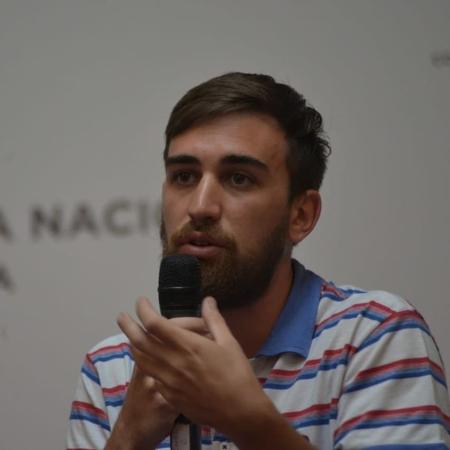
At 24 years of age, Adriel Magnetti is a young student of Biological Sciences in Buenos Aires, Argentina. He lives and works for the rioplatense region, with emphasis on Urban Nature Reserves and Local Protected Areas.
With a vision that nature is contained everywhere, and above all, that the beauty and benefits are not exclusive to National Parks or Biosphere Reserves, Adriel works hard in an Urban Ecological Reserve and actively promotes communication and awareness work so that the local population recognizes the benefits, challenges and leading role in regulating the climate and providing cultural services to society.
The Ciudad Universitaria-Costanera Norte Ecological Reserve is a protected area of the Autonomous City of Buenos Aires, located in the northern part of the city, in the Buenos Aires neighborhood ofBelgrano, between the coast of the Río de la Plata and the University City of Buenos Aires, which is the campus of the University of Buenos Aires (UBA), the largest higher education institution in the country.
Adriel is an example of action and love for nature, and therefore, an example of #Naturalezaparatodos, a global movement to inspire love for nature.

